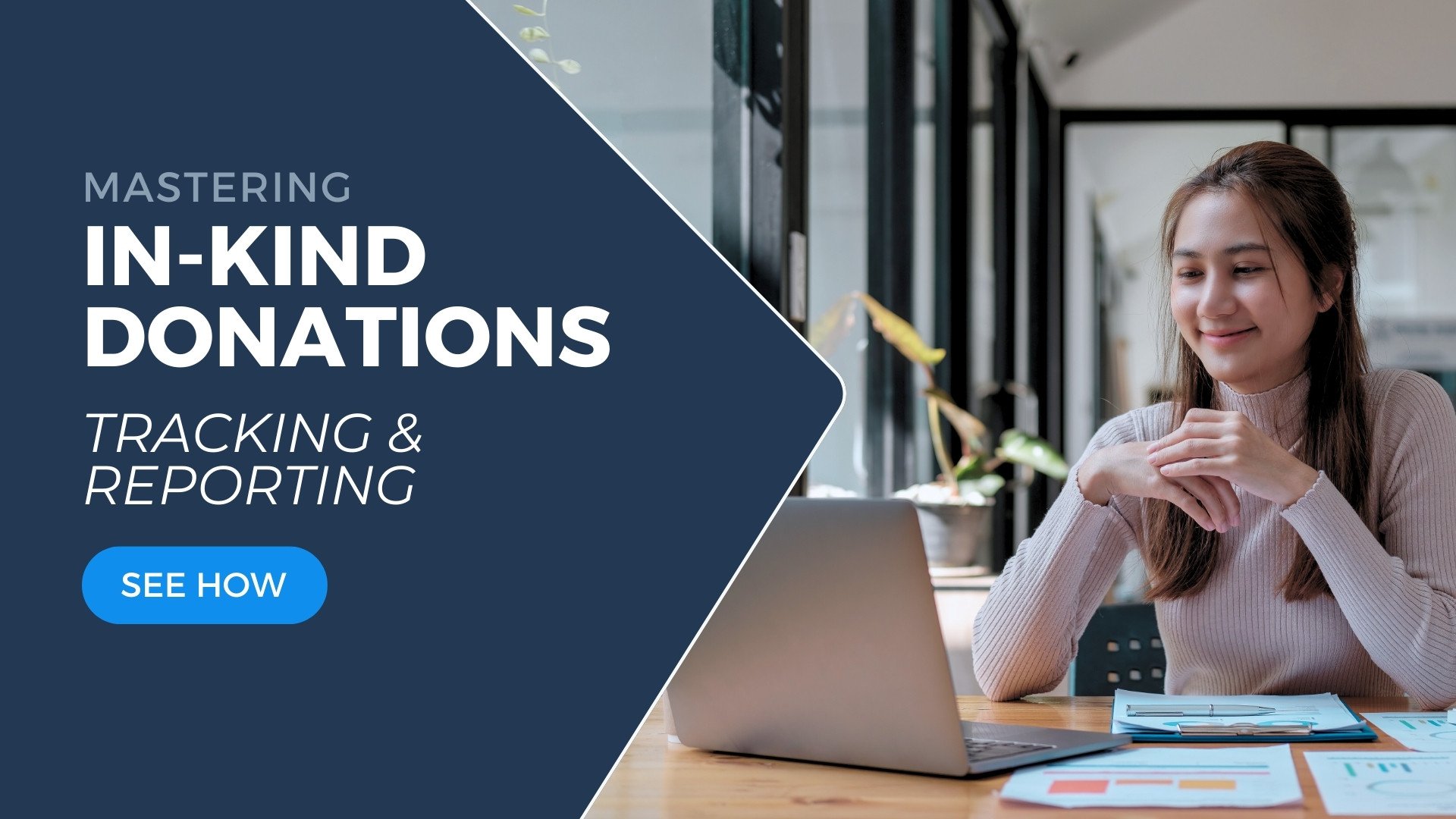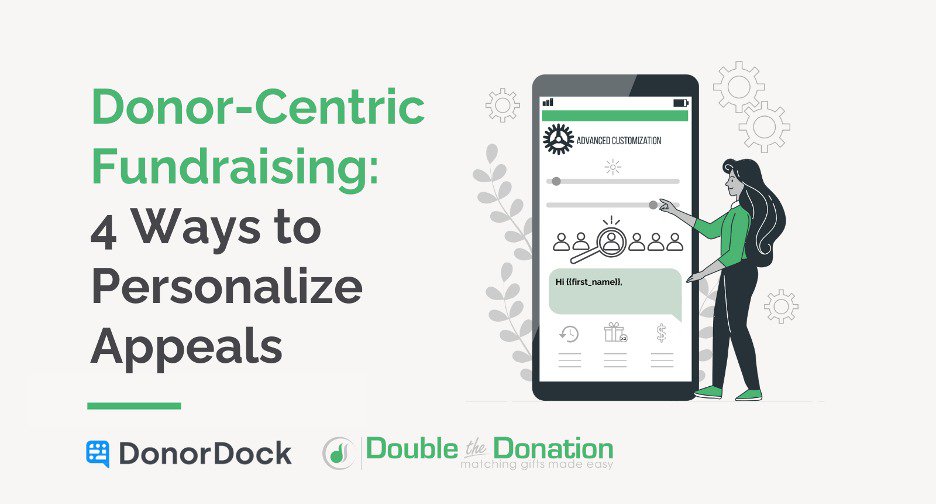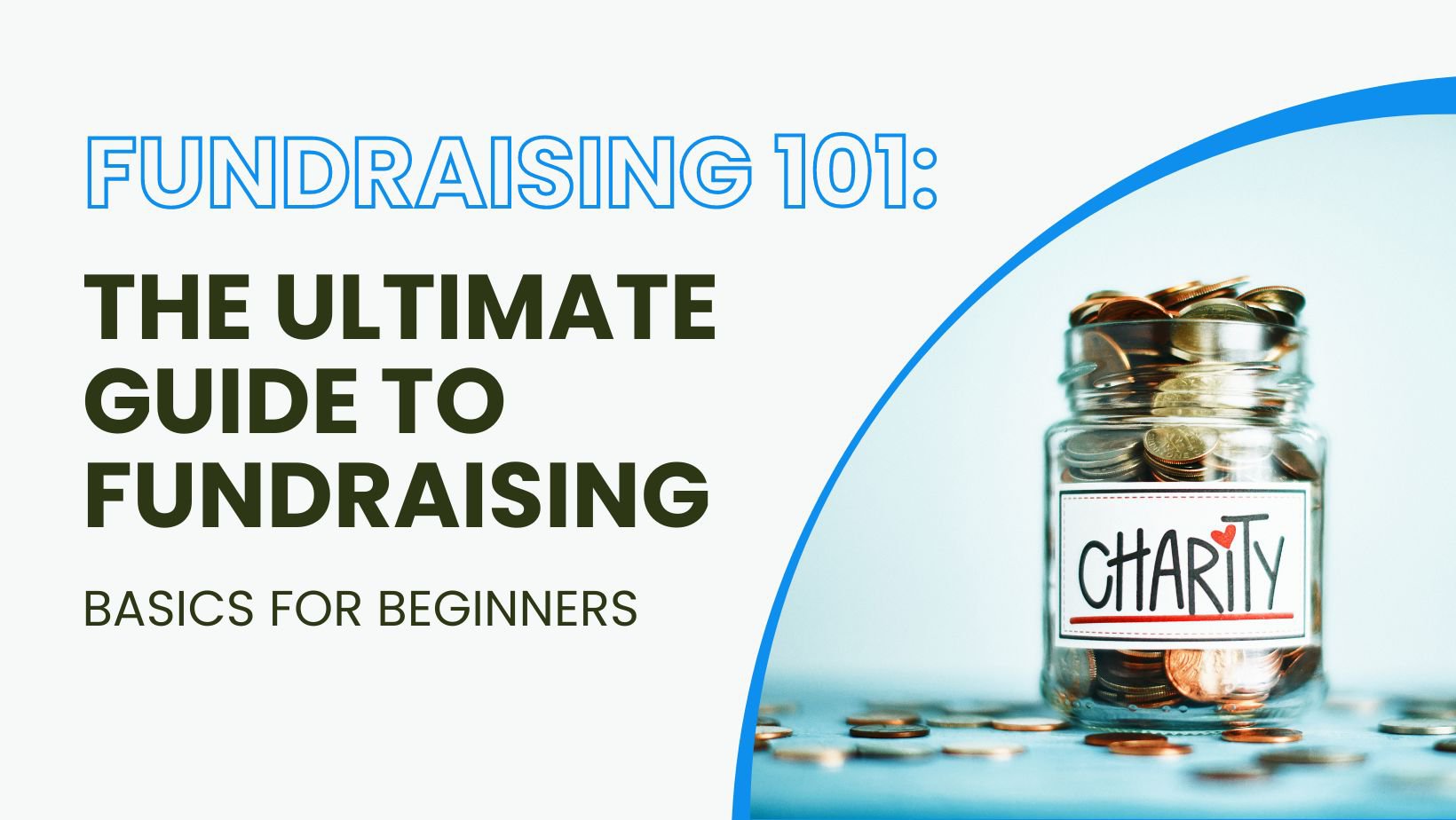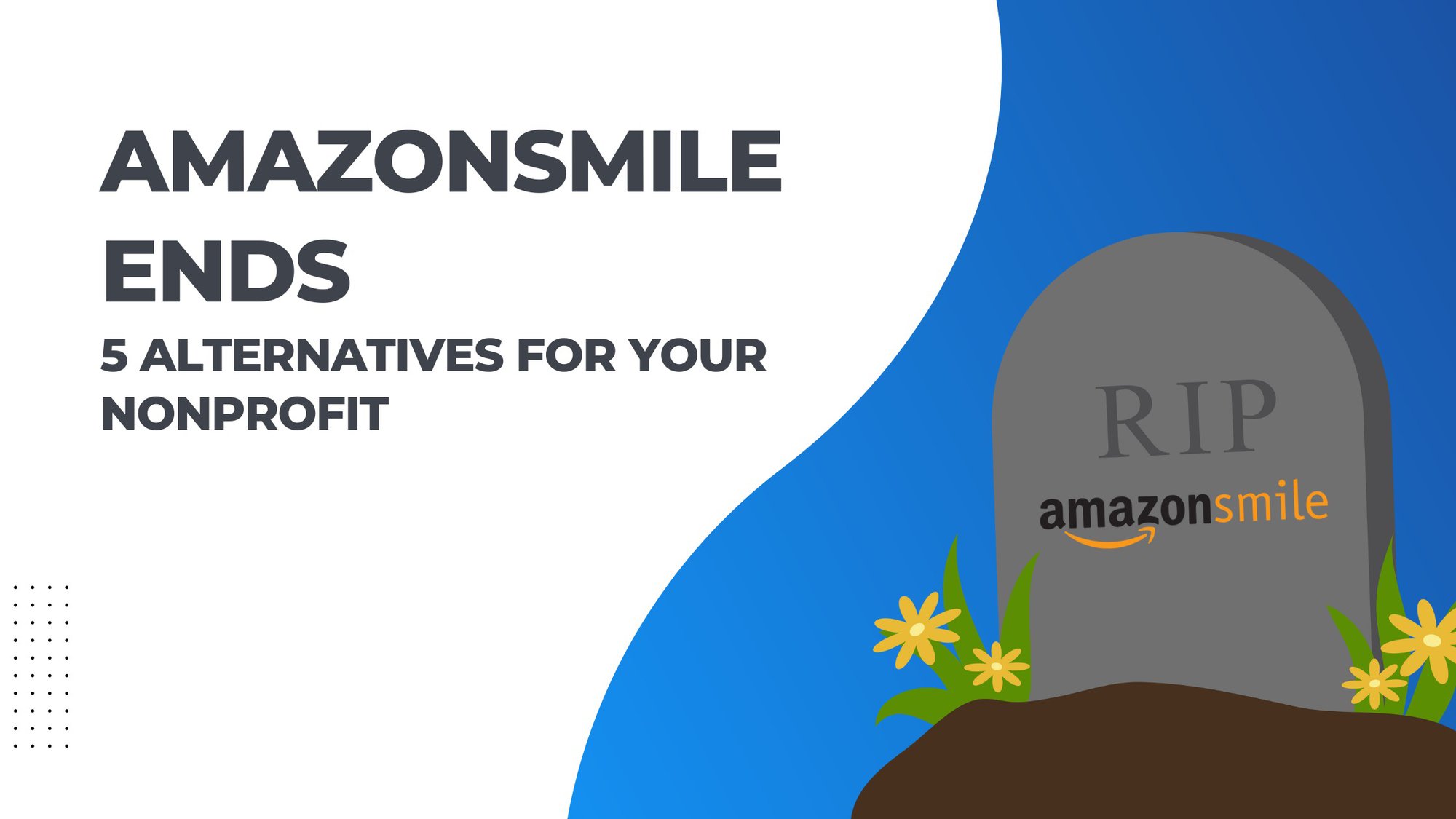Struggling to keep your donors around? You're not alone. Nonprofits everywhere are wrestling with the challenge of donor retention. With the average donor retention rate hovering around 45%, it's like a revolving door – folks come in, make their mark, and often slip away before you can even say 'thanks'. But here's some good news: it doesn't have to be this way.
You'll discover how crucial hanging onto your supporters is and why they might choose to stay or stray. By diving into donor data, exploring options like recurring donations, and ramping up engagement efforts, you stand a better chance at keeping those valuable contributors close.
We'll guide you through actionable strategies to help nudge your retention rates northward while making sure every supporter feels valued for fueling your mission. Ready to boost your donor retention rates?
Table of Contents:
- What is donor retention and why does it matter?
- The power of donor data in donor retention
- Collecting donor data
- Strategies to improve donor retention
- Conclusion
- FAQs
Understanding Donor Retention and Its Significance
Donor retention is a critical metric for nonprofits to track. It represents the percentage of last year's donors who continue to contribute to your nonprofit. It's about more than just repeat donations; it reflects an ongoing relationship between your organization and its supporters.
Donor retention is the percentage of last year's donors who continue to contribute to your nonprofit.
The Basics of Donor Retention
A healthy donor retention rate means that a nonprofit isn't just raising money but cultivating long-term partnerships with its contributors. With rates hovering around 45% over the last decade, there's significant room for improvement across the sector.
While it’s important to continue to grow your donor database each year, you’ll want to make sure that those numbers aren’t simply first-time donors who may never give again. It’s crucial to grow the number of donors you’ve retained year to year, also.
How do you calculate donor retention?
Divide the number of this year’s repeat donors by those from the previous year.
Why donor retention matters
According to a study done by Classy nearly 70% of donors don’t give past their initial gift. This alarming statistic suggests that while attracting new supporters is important, small nonprofits must put equal—if not greater—emphasis on initiatives designed to retain donors.
Why? Because small nonprofits have tight budgets and limited time. And, donor retention is a more effective use of your time and budget than donor acquisition. According to Double the Donation the cost to acquire a new donor can be 50-100% of what they end up giving.
Donor acquisition efforts are aimed at a broader audience, who may or may not care about your nonprofit’s mission. With donor acquisition, you’ll need to convince new donors that your nonprofit is worth giving to. However, with donor retention, you are focused on constituents who you already know care about your mission. These are people who have heard of your nonprofit, deemed it trustworthy, and have already said once before they are willing to support you.
Not only is it easier to connect with these previous donors in more intentional and meaningful ways because you already have their data, but repeat donors are also more likely to give a higher amount than they previously did.
Donor engagement efforts can show donors that you value the details. And a thank you says, “This gift truly matters.” A focus on retaining existing donors can be more cost-effective than recruiting new ones because familiar faces are often willing to give again if they feel valued.
A story of successful donor retention
Kat Lacefield shared a story on Beyond the Donation episode 24 about one nonprofit’s experience with donor retention paying off. The Montreal SPCA had a new project with a hefty price tag. They hoped to expand their clinic to offer more free sterilizations for stray cats. The cost? 250,000 dollars! They opted to do a mailing campaign, which overall failed.
They did have one recurring donor who decided to give to their campaign. This donor had been giving roughly $500 a year. However, they decided to gift $250,000 because the Montreal SPCA’s donor engagement efforts over the years had built trust with this donor. The donor had received a handwritten Christmas card that said thank you every year. In her opinion, an organization that will take the time to write a handwritten letter and say thank you is an organization that pays attention to details, relationships, and what's important. And that's an organization that she will trust to take care of the sterilization clinic.
As we dive deeper into this topic remember: keeping loyal backers engaged is essential not only for sustaining necessary funds but also because high-quality relationships with donors tend to raise both average gift amounts and overall satisfaction levels among constituents which ultimately fuels further advocacy work down the line.
Key Takeaway:
Donor retention isn't just about money—it's building lasting partnerships. A solid base of repeat donors is key for growth and stability, so focusing on keeping them engaged can save more resources than constantly seeking new ones.
Leveraging data to drive donor retention efforts
Understanding the current trends in donor retention is like keeping a pulse on the heart of nonprofit fundraising. With roughly 40-45% of donors sticking around year after year, this means more than half of all supporters are one-and-done deals.

Digging into these numbers reveals an even starker contrast when we consider repeat versus first-time donors. Repeat donors show loyalty at a rate closer to 60%, but newcomers? Only about 20% feel compelled to give again. That statistic alone should light a fire under nonprofits to boost their retention strategies.
So how do you go about growing your donor retention rates? The first step is to dive into your donor data.
How to effectively gather donor data
Gathering donor data isn't just busywork; it’s essential intel for refining retention strategies over time. Tracking different key donor data helps you identify patterns that inform personalized outreach efforts—a surefire way to make every supporter feel valued.
But what donor data should you be tracking? Check out these 10 essential donor data points to collect about your donors.

Think of your nonprofit's donor data as a treasure map. It holds the clues to where you've been successful and where there might be hidden opportunities for growth. Every donation, every interaction, every trend is a piece of the puzzle that, when properly understood and utilized, can propel your organization forward.
However, managing this data effectively is no easy task. It requires a robust and intuitive system that can handle the complexities of donor relationships while providing insights that drive strategic decision-making.
This is where a nonprofit CRM comes into play. A nonprofit CRM, like DonorDock, is a solution designed specifically to meet the unique needs of nonprofits in managing their donor data.
With DonorDock, nonprofits can easily segment their donor base, personalize communications, and track interactions, ensuring that no opportunity for engagement is missed. Additionally, its intuitive interface and dashboard empower nonprofits to gain actionable insights into their donor data, enabling them to make informed decisions that drive donor retention.
In essence, DonorDock not only simplifies the complexities of donor management but also equips you with the tools you need to thrive and make a meaningful impact in your community.

Now that you have an idea of how to gather donor data, let’s look at ways to use your data to boost your donor retention!
The power of donor segmentation in donor retention
Donor segmentation involves categorizing your supporters into specific groups according to common traits. These traits may include donation amounts, donation frequency, interests, or age demographics. Imagine two donors: one donor gives a monthly recurring gift and responds to your monthly nurture emails, and the other gives sporadically but volunteers with your org and shares about your nonprofit on social media. These two donors need different interactions with your nonprofit to continue feeling connected. For instance, an email to the second donor might not be seen; however, they’d truly appreciate a social media shoutout.
By analyzing past interactions with donors, you can shape future donor engagement. Just as you wouldn't give everyone the same gift on their birthday, personalized outreach based on what resonates with each supporter helps donors feel connected and cared for. This could mean recognizing milestones or tailoring communications about new initiatives they're interested in. Data-driven personalization makes every message count.
Key Takeaway:
Think of your donor data as a compass leading to engaged supporters. Tailor outreach with personalized messages and analyze social media for deeper engagement, not just donations. Focus on first-time donors and nurture even small contributions for long-term impact.
Strategies to improve donor retention rates
Boosting donor retention is like keeping a garden thriving—it requires consistent care and the right strategies. Here are some actionable tips that can help your organization nurture lasting relationships with donors.
Engaging first-time donors for sustained support
The first-time donor is much like someone trying out a new restaurant—they're testing the waters and deciding if they’ll return later on down the road. Your goal? To transform them into repeat donors who support your mission year after year because they believe in its impact wholeheartedly.
This is where a first-time donor journey map is incredibly helpful. A donor journey map is a powerful tool that helps your nonprofit understand how donors interact with you, as well as helps guide donors toward the steps you would like them to take.

All donors benefit from intentional efforts to show appreciation. But, did you know, 13% of first-time donors never receive a thank you? If a donor never receives a thank you, they may think their gift isn’t making a difference.
Beyond an initial thank you, it’s important to consistently engage with first-time donors, so that you stay top of mind. Remind donors of the work that your nonprofit is doing, and how they have played a role in changing their community. Find out how they prefer to communicate, whether by email, text message, social media, or a phone call. Donor retention efforts are only effective if they see your messages.
Fostering connections right from their first gift is key. Automatic thank yous that sync with your donation pages can help take tasks off your plate while improving donor relationships and retention. Take time to follow up with an email that showcases how their donation makes an impact. For example, direct mail personalized with details about projects or an automated email can make new donors feel valued and more likely to contribute again.
Key Takeaway:
Automate a thank you to new donors. Communicate with them on the channel(s) they prefer.
Well-timed donor engagement to prevent a lapsed donor
Is your organization struggling to recapture lapsed donors? That may be because only 5% of lapsed donors give again. This stark statistic underscores the value of crafting engaging outreach campaigns through data-driven insights. Personalized communication and showing appreciation for past gifts can reignite a donor’s commitment, but it’s better to prevent a donor from lapsing in the first place.
Nurturing relationships with emails and text messages
It's startling yet true: nearly every $100 gained in giving faces $96 walking out the door due to attrition according to Fundraising Report Card benchmarks. To combat this loss effectively requires preemptive action.
Connecting with donors at the right time makes all the difference in keeping them engaged. Remembering milestones like the anniversary of their first donation or sending birthday wishes might seem small, but they can have a big impact. It's not just about saying thanks for the cash; these personal touches show that you care about them beyond their donations. So, reach out and celebrate those special moments together. It's a win-win: they feel valued, and you keep those donor relationships strong and steady.
Personalized communication shows your donors you understand them and value their unique contribution. A nonprofit CRM is an integral component to managing this level of personalized communication. The right CRM tool enables you to segment your donor base, paving the way for more targeted engagement strategies.
On top of personalized connection points, sending regular updates about your nonprofit is another great way to stay connected with donors. Whether through email or text, regular and consistent updates show donors that you value them and that they are necessary to fuel your nonprofit’s mission. Nurture emails that are sent out monthly or quarterly remind donors about your nonprofit and show them that they are more than just an ATM.
With segmented data, you can create monthly nurture emails or texts that cater to specific donor demographics. Whether it's acknowledging a donor's length of support, the size of their donations, or their particular interests in your charity's work, personalized communication can greatly enhance your donor engagement rate.
By consistently engaging with donors in meaningful ways, your nonprofit fosters long-term relationships and prevents donors from lapsing.
Enhancing engagement with social media
Social media isn't just for sharing cat videos; it's a powerful tool for nonprofits to keep donors in the loop. Think of each platform as a digital megaphone, amplifying your cause and creating meaningful connections. A post highlighting success stories or showcasing how donations are used can turn passive followers into active supporters.
To leverage social media effectively, remember it's not about blasting messages but fostering conversations. Engage with comments, share updates often, and create content that resonates on an emotional level. By doing so, you'll give current donors reasons to stick around while piquing the interest of potential new ones.
In addition to sharing impactful narratives on social platforms like Facebook or Instagram which help remind current donors why they gave initially—it allows potential repeat donors insight into continued efforts worth supporting again.
Key Takeaway:
Think of social media as your digital megaphone to turn followers into active supporters. Engage, share often, and hit the heartstrings with your content.
Donation page optimization
To encourage ongoing support, offer recurring gift options upfront. When done right, it not only provides steady funding but also builds donor loyalty over time. A study showed that revenue from recurring gifts increased by 17% in just one year—clear evidence that offering recurring options pays off long-term.
One way to optimize your donation pages is by adding a simple way to make a gift recurring. Many donors might want to give regularly, but the hastle of actually donating gets in the way. The convenience of setting up a recurring monthly gift helps integrate giving into your supporters' lives much like their Netflix subscription - out of sight but never out of mind.

Conclusion
Donor retention is the heartbeat of your nonprofit's success. Remember, keeping donors is key. When they stick around, you save resources and build a stable foundation for growth.
- Nurture relationships like you would a garden; attentively and regularly.
- Dive into data to understand giving patterns
- and personalize outreach with care.
- Offer recurring gift options because convenience wins loyalty.
Social media isn't just chit-chat; it's your tool to engage and inform supporters in real time. Make sure each donor feels seen and their impact recognized, their contributions are essential.
You've got this! Turn first-time givers into lifelong friends by making them feel part of something bigger than themselves—because they are.
Are you using a donor development platform that fits your needs and serves up actionable steps to help you cultivate better donor relationships?
Improve your donor retention rates with DonorDock. Try it free today!
FAQs about Donor Retention
What is good donor retention?
According to the Fundraising Effectiveness Project, the average donor retention rate hovers around 44.5%. This statistic gives you a benchmark to compare your own organization's retention rate against. Using a nonprofit CRM like DonorDock you can easily track the percentage of donors who continue giving each year . Consistently keeping over 45% of your donors from year to year would give your nonprofit an above average donor retention rate.
What is the donor retention rate in 2024?
The exact figure fluctuates, but it's often near that persistent 40-45% industry average.
How do you motivate and retain donors?
Show impact, communicate regularly, thank promptly, and offer varied ways for donors to stay involved. Sending out nurture emails and texts keeps you top of mind with donors. They’ll be able to see the good your nonprofit is doing, while also feeling like a valued part of moving your mission forward.
What is the difference between donor acquisition and donor retention?
Donor acquisition grabs new supporters; donor retention keeps them coming back. Both are vital for growth. Overall donor acquisition tends to be more costly than donor retention.














